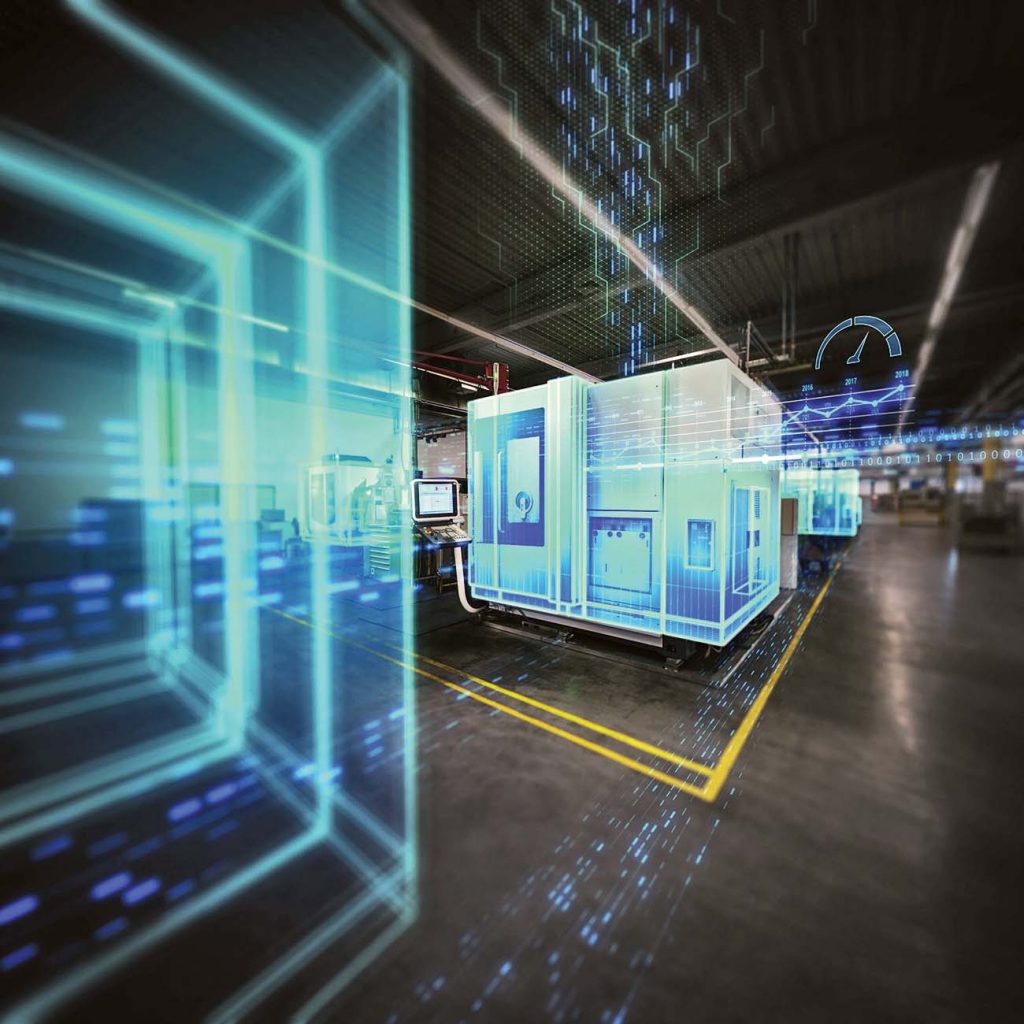
Three views of how digitalization advances machine tool building
By Ramona Schindler
Innovation & Technology Manufacturing digitalization Industry 4.0 machine tools manufacturing Siemens TechnologyStart at the design phase to build more reliable machines.

Digitalization on the shop floor.
PHOTO: SIEMENS
Machine tool builders hear and read a lot about digitalization. There are three ways OEM engineering and management teams can view this technology’s impact as it shapes production and sales processes of the future.
- Advantages during design. Digitalization is a viable means of building a more effective, reliable and predictable machine from the very outset of the design phase.
Having a visual model of your CNC machine for commissioning makes the investment in digitalization worthwhile. With the data and design concept in hand, you can use digitalization tools, such as a mechatronics concept designer, which brings the physics of the world to your computer screen. You test the PLC and the NC, run the motion control or load protocols including full machine kinematics and conduct overall system component integration, prior to the first manufacturing step of the build.
Digitalization tools provide highly accurate hardware in the loop emulation, transitioning from CAD to CAM to mechatronic concept designer, then finally to the virtual machine controller. Since the model is essentially mirroring the real hardware in operation under power, the simulations of machine motion and feedback are more precise than it would be with a pure simulation.
Specific customer challenges are addressed at this stage and the results for the machine tool builder are faster resolution of design issues and quicker path to market.
- Improved customer experience. Digitalization adds definable value that can be presented to customers.
On a functional level, the digital twin further integrates virtual and actual machine commissioning and production monitoring. The machine tool builder presents its machines with enhanced, augmented reality monitoring, customizable apps for data prioritization and improved requirements and production data evaluation scenarios.
This concept of data exchange represents a richer value proposition for the machine tool, as you present it to your customer. It also creates a closer touch point between builder and customer.
- Better business models. Builders fashion new business models for the use of machine tools by demonstrating to customers what can be done with the data and to sell more services, optimize machine uptime and track the performance of equipment in the field, all of which improves the customer experience with your machines.
Tracking data
New business models are also created by the machine tool builder’s ability to help customers use digitalization tools to improve their production. The virtual twin, based upon the virtual NC kernel, allows various production, material handling and full motion control scenarios to be sampled by the customer in the design stage. Virtual training for programmers, operators and maintenance personnel is also possible. This digital twin is high-value in terms of market appeal, plus the embedded software positions the training as a perceptible value-add for the machine builder to pass along to the end-customer. This saves the customer valuable machine uptime on the shop floor.
As machine tool builders become more capable of tracking data on their CNC machines, there’s a dual benefit for the customer. Machine uptime is improved with more streamlined resolution of issues. Current and rapidly emerging edge technology also add more precise analysis of the machine and the customer’s production process.
Studying component and overall machine performance in the field improves the design and production process of the machine, even a global installed base, and makes this data available to the end-customer. The machine builder then uses the available data to track line productivity, machine-to-machine or facility-to-facility comparisons, production schedule variance and other KPIs.
Digital twins are emerging as viable tools in the design and marketing of many CNC machine tools, a trend that will continue.
Bottom line, digitalization, both at the concept and build stages for the OEM and customers, can be implemented at every level of machine tool operation.
Romona Schindler is head of machine tool systems, Siemens, based in Switzerland. Siemens Canada Ltd.’s head office is in Oakville, Ont. E-mail ramona.schindler@siemens.com.
